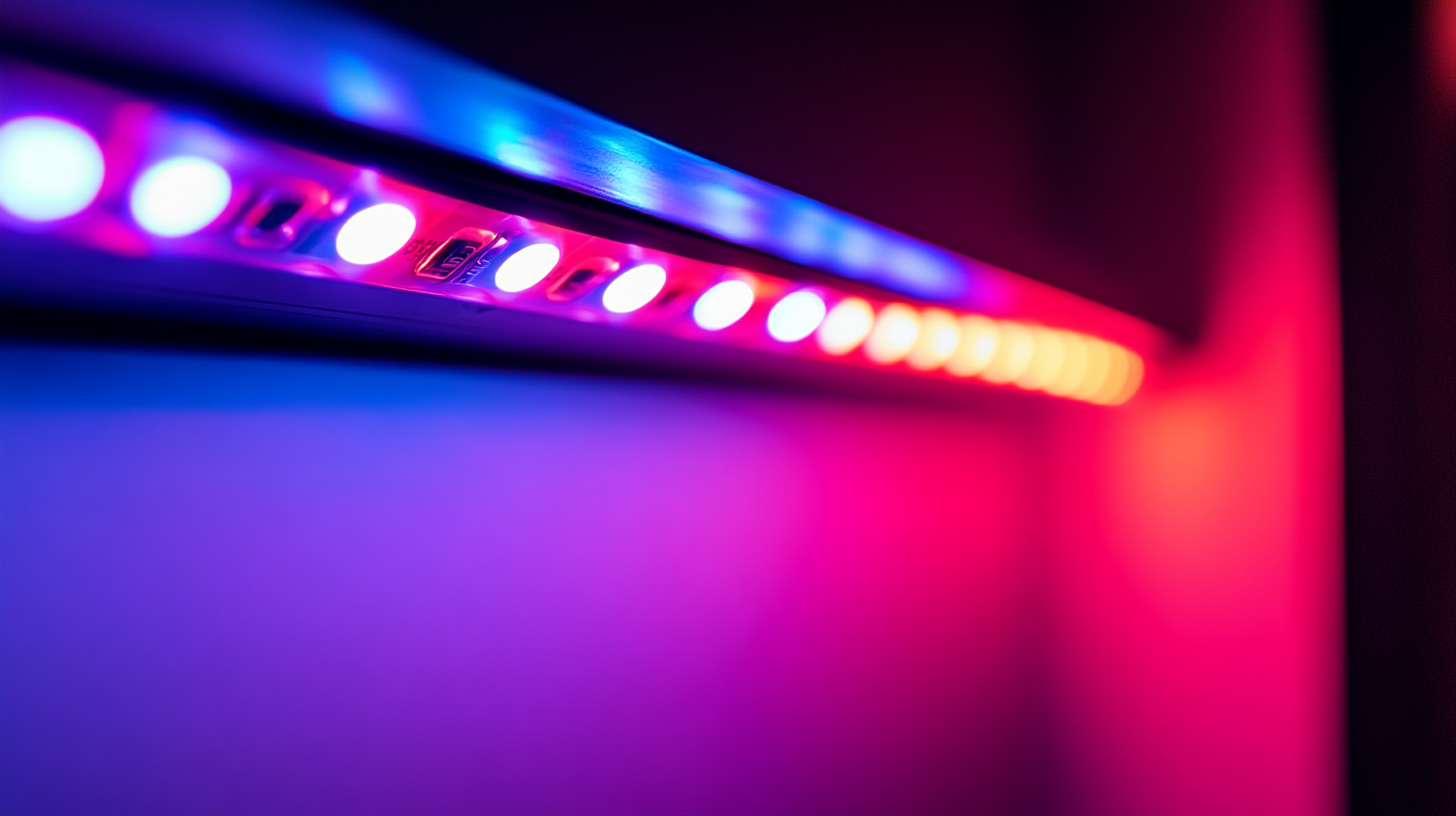10 Essential Tips for Choosing the Best Dimmable Led Driver for Your Global Sourcing Needs
As the demand for energy-efficient lighting solutions continues to rise, the role of the Dimmable LED Driver has become increasingly crucial in global sourcing strategies. According to a recent market report by Grand View Research, the global LED driver market is projected to reach USD 7.53 billion by 2025, with a significant portion attributed to the growing adoption of dimmable technologies in residential and commercial lighting applications. This surge highlights the importance of selecting the right Dimmable LED Driver to not only enhance lighting control but also maximize energy savings and extend the lifespan of LED fixtures. In this ultimate guide, we will explore ten essential tips for choosing the best Dimmable LED Driver to meet your sourcing needs, ensuring optimal performance and reliability in your lighting projects.

Understanding the Importance of Dimmable LED Drivers in Global Sourcing
Dimmable LED drivers play a crucial role in the modern lighting landscape, especially as global sourcing becomes increasingly significant. Understanding their importance is essential for businesses aiming to optimize both energy efficiency and product customization. As dimmable LED technology continues to evolve, manufacturers are increasingly focused on creating drivers that enable precise control over lighting levels, improving user experiences in both residential and commercial settings.
The LED driver market is experiencing rapid growth, with projections estimating revenues skyrocketing from approximately USD 10.66 billion in 2025 to around USD 56.6 billion by 2033. This trend underscores the necessity for companies to carefully consider their sourcing strategies when choosing the right dimmable LED drivers. With such significant market expansion, businesses must analyze factors such as compatibility, energy efficiency, and cost-effectiveness when making their selections, ensuring that their sourcing efforts align with the latest advancements in LED technology. Whether for innovative product development or renovation projects, understanding the nuances of dimmable LED drivers will empower businesses to meet the demands of a competitive global market.
10 Essential Tips for Choosing the Best Dimmable Led Driver for Your Global Sourcing Needs
| Tip Number | Tip Description | Key Considerations |
|---|---|---|
| 1 | Determine the required wattage | Assess total LED load to choose an appropriately rated driver. |
| 2 | Check compatibility with LED fixtures | Ensure the driver matches the specifications of the LED lights. |
| 3 | Evaluate dimming options | Research if the driver supports phase-cut or 0-10V dimming. |
| 4 | Consider thermal management | Select drivers with proper heat dissipation mechanisms. |
| 5 | Review manufacturer certifications | Ensure compliance with safety standards (e.g., UL, CE). |
| 6 | Assess the input voltage range | Check if the driver operates on the required voltage levels. |
| 7 | Look for efficiency ratings | Select drivers with high efficiency for energy savings. |
| 8 | Evaluate the form factor | Consider the physical size of the driver for installation. |
| 9 | Analyze price vs. performance | Balance cost with the features offered by the driver. |
| 10 | Examine warranty and support | Choose drivers with good warranty options and customer service. |
Key Features to Look for in a Dimmable LED Driver for Optimal Performance
When it comes to selecting a dimmable LED driver, understanding the key features is crucial for ensuring optimal performance in your lighting projects. One of the most essential characteristics to consider is the driver’s compatibility with various dimming protocols. According to a report by MarketsandMarkets, the global LED driver market is projected to grow from $6.0 billion in 2021 to $11.6 billion by 2026, highlighting the increasing demand for versatile and efficient dimming solutions. Look for drivers that support multiple dimming methods such as 0-10V, PWM, and Phase-cut dimming to accommodate different systems and enhance user control over lighting conditions.
Another vital feature is the driver’s output current range and load capacity. A flexible output range allows for better adaptability across various LED applications, maximizing energy efficiency and reducing waste. Research indicates that using the right driver can improve the overall lifespan of LED fixtures by up to 30%, as incorrect drivers can lead to overheating and premature failure. Therefore, sourcing a dimmable LED driver with adjustable output and robust thermal management solutions is critical to achieving long-term performance and reliability in your installations.
Performance Comparison of Dimmable LED Drivers
Assessing Compatibility: Ensuring Dimmable LED Drivers Fit Your Lighting System
 When selecting a dimmable LED driver, assessing compatibility with your existing lighting system is paramount. Not all LED drivers are suitable for every application, especially when dimming functionality is involved. Ensure that the driver you choose matches the voltage requirements of your LED fixtures. For instance, a mismatch could lead to insufficient brightness or even damage the lights.
When selecting a dimmable LED driver, assessing compatibility with your existing lighting system is paramount. Not all LED drivers are suitable for every application, especially when dimming functionality is involved. Ensure that the driver you choose matches the voltage requirements of your LED fixtures. For instance, a mismatch could lead to insufficient brightness or even damage the lights.
Additionally, consider the type of dimming technology your lighting system employs, such as phase-cut dimming or 0-10V dimming. Each method has specific driver requirements. It's advisable to consult with manufacturers to guarantee that your dimmable LED driver can smoothly integrate and provide a flicker-free dimming experience.
As you navigate your selection process, keep in mind the overall wattage and load capacity. It's essential to select a driver that efficiently supports the total wattage of your LED fixtures. A driver that is either under or overpowered can result in performance issues, excessive heat, or short lifespans for your lighting system. Engaging with reliable suppliers who understand your needs can make a significant difference in your sourcing journey.
Navigating Regulatory Standards for Dimmable LED Drivers in Global Markets
When sourcing dimmable LED drivers for global markets, understanding and navigating regulatory standards is crucial. According to a report by the International Energy Agency (IEA), the global LED driver market is projected to grow at a CAGR of 10% from 2021 to 2027, driven by increasing energy efficiency demands and stringent regulations in various regions. Compliance with local and international standards such as IEC 62368-1, which outlines safety requirements for electronic equipment, is imperative for manufacturers and suppliers to ensure product reliability and safety across markets.
Moreover, different regions have specific regulations that must be adhered to. For instance, the European Union's EcoDesign directive mandates that all LED drivers must meet energy efficiency requirements, while also promoting the use of materials that limit environmental impact. In the USA, the Department of Energy (DOE) has introduced standards that affect the performance and efficacy of LED drivers. According to industry research, failing to comply with these standards can result in substantial financial penalties and hinder market entry, making it vital for businesses to stay updated on the latest regulatory changes and incorporate compliant products into their sourcing strategies.

Cost Considerations: Balancing Quality and Budget in Dimmable LED Driver Selection
When choosing the best dimmable LED driver for your sourcing needs, balancing cost and quality is crucial. While it may be tempting to opt for the cheapest option available, investing in a higher-grade driver can significantly enhance the performance of your lighting solutions. One essential tip is to consider energy efficiency. A more efficient driver not only saves electricity but also prolongs the lifespan of your LED fixtures, ultimately leading to lower long-term costs.
Another critical consideration is compatibility with your existing systems. Ensure that the dimmable LED driver you select works seamlessly with your lighting fixtures and control systems. Many brands are now expanding their offerings to include smart lighting options, allowing for greater flexibility and control. This can add value to your investment, as a compatible system can improve overall user experience and functionality.
Lastly, always evaluate the warranty and support options provided by the manufacturer. A robust warranty indicates confidence in the product's quality, and strong customer support can be invaluable in case of any issues. Balancing these factors with your budgetary constraints will help you choose the right dimmable LED driver tailored to your specific needs.
